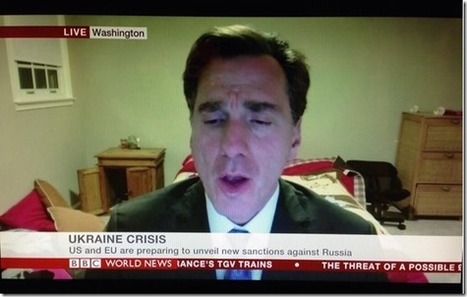Lee Feinstein, the former U.S. ambassador to Poland, has an impressive résumé. He served under two presidents (Clinton and Obama), worked at the Departments of Defense and State, and is a prolific author. Today, he serves as the Senior Transatlantic Fellow for the German Marshall Fund.
But when I saw this tweet on Sunday night, I knew I’d want to write about an interview he recently gave.
The tweeter, @JudgeElihu, snapped a photo from Mr. Feinstein’s television appearance, which aired on BBC World. Although I couldn’t find the video from this appearance, I did find video of another interview Feinstein conducted from the same room in March.
The room from which Mr. Feinstein conducted the interview was a mess: a nightstand door was open, a bed was directly behind him, and small, barely detectable items were perched on the dresser....
Research and publish the best content.
Get Started for FREE
Sign up with Facebook Sign up with X
I don't have a Facebook or a X account
Already have an account: Login
Social marketing, PR insight & thought leadership - from The PR Coach
Curated by
Jeff Domansky
 Your new post is loading... Your new post is loading...
 Your new post is loading... Your new post is loading...
|
|














Brad Phillips highlights a common problem with Internet and Skype interviews. Calling from what looks like your teenager's room is bad for your reputation and the credibility of your message.